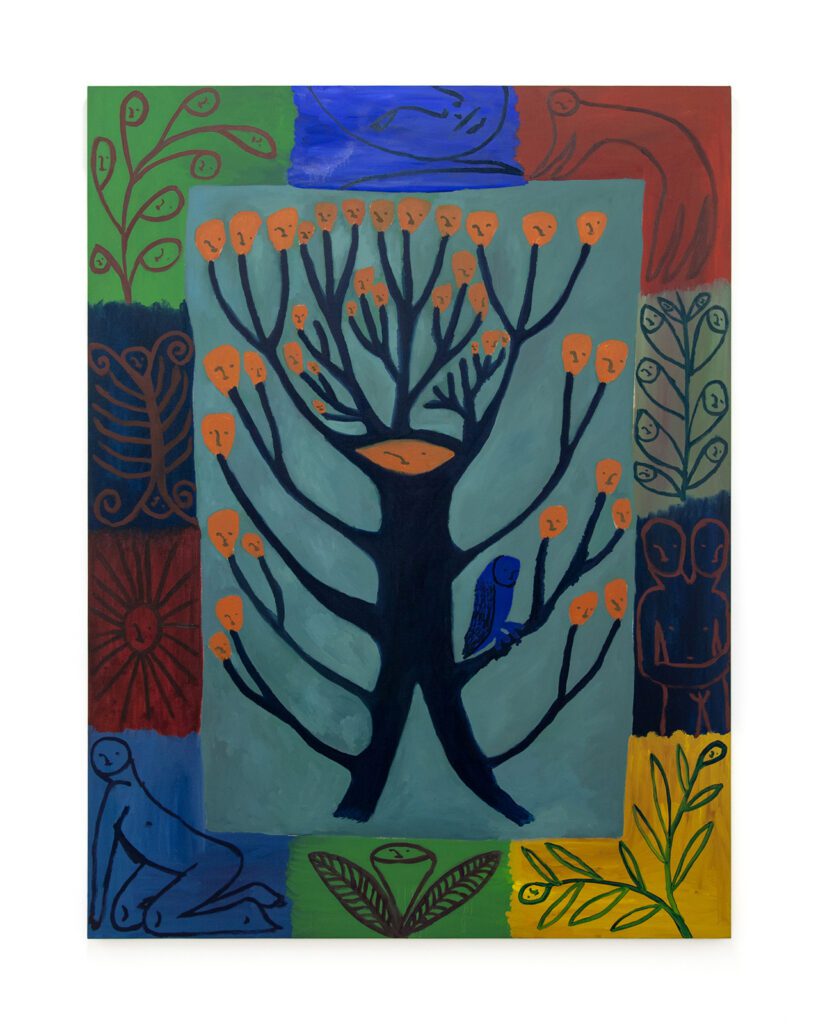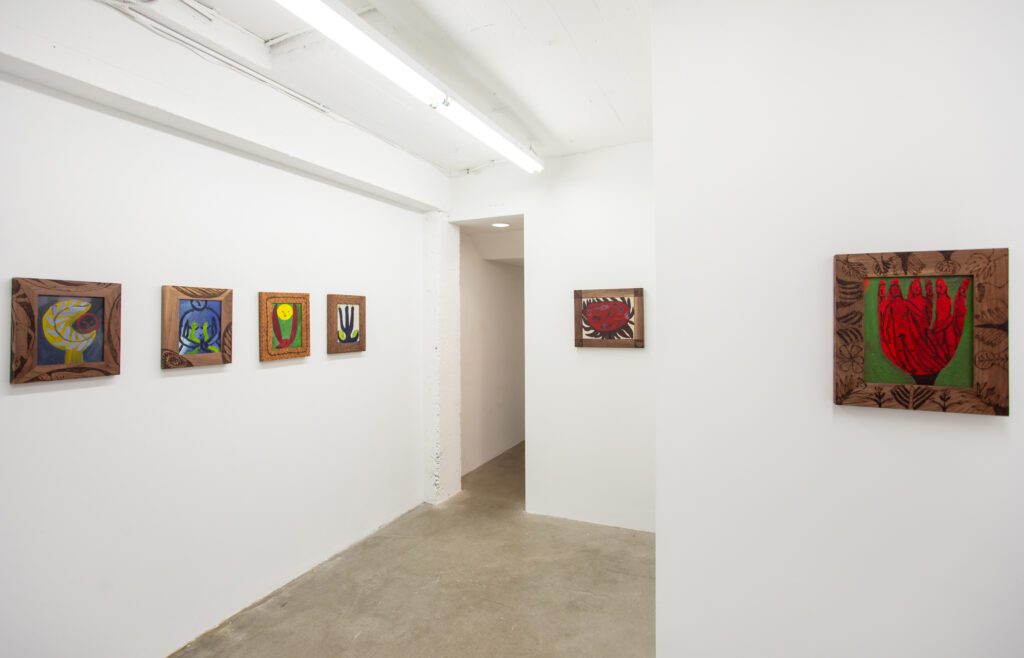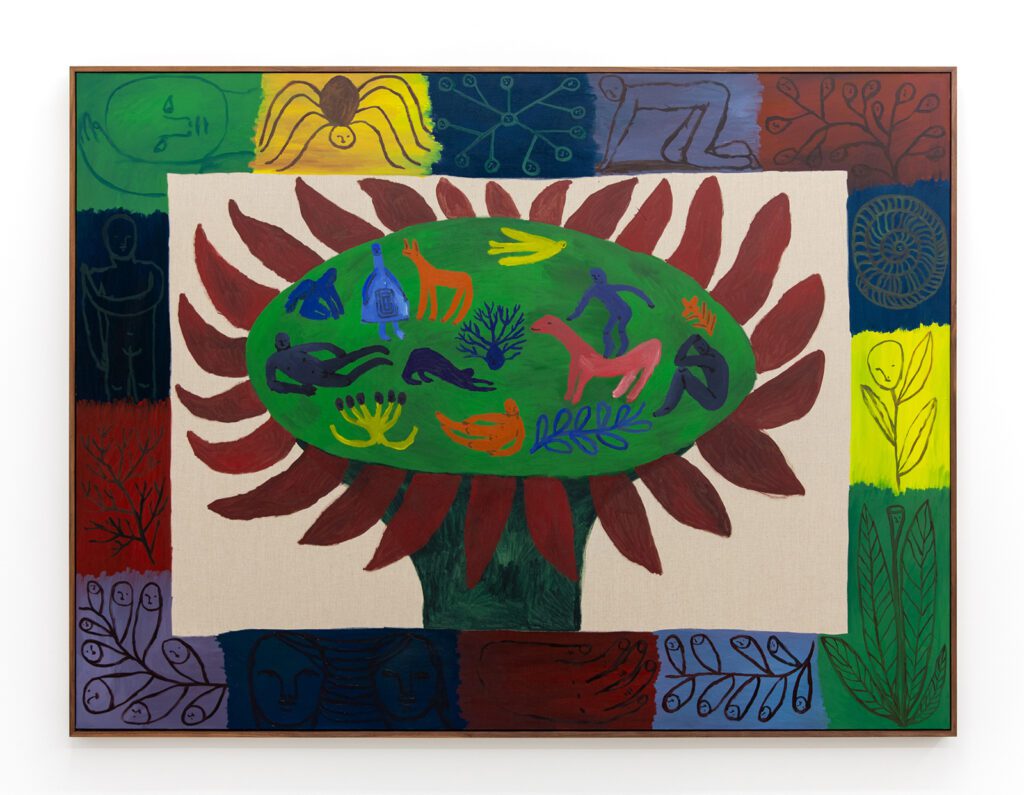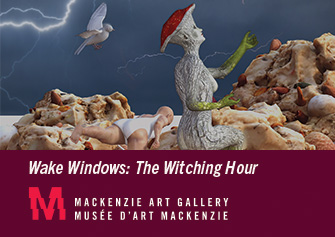Emma Kohlmann at Cooper Cole
15 April 2024By Michael Thompson

The final scene of William Dear’s academy award–winning Harry and the Hendersons (1987), sees patriarch George Henderson, played by John Lithgow, lead his family into a dense wood situated atop a secluded mountain range. They’ve fled here in an effort to escape a pursuing tail of journalists and covert government agents who are eager to capture the family’s illicit cargo: a giant sasquatch named Harry. After it proves difficult to hide Harry in their suburban Seattle neighbourhood, the Hendersons rush him into the mountains in an attempt to return him to a more suitable home. In this culminating scene of the film, Harry drifts listlessly into the woods, heartbroken by his forced departure from the Henderson family, who watch on in a tearful goodbye. Suddenly, the panoramic shot is interrupted, and the forest closes in around Harry as members of his sasquatch family magically reveal themselves from the foliage, granting viewers a happy ending by assuring that all is now right as Harry has returned to his true home. This cast of mythic forest creatures has the added function of calling perception into question. Rewinding the film reveals that they were in the scene all along, made imperceptible simply by the focus our attention gives to the characters we know. The scene proposes that a world of impossibilities can be found all around us, if only we knew where, or indeed how, to look.
A similar supernatural forest is evoked in Emma Kohlmann’s solo exhibition Sitting by the Well which showed last fall at Cooper Cole in Toronto. In the same way that William Dear’s wood creeps to life with Harry’s clandestine kin, Kohlmann’s paintings are dotted with similarly androgynous figures, often folded into themselves or wrapped furtively around frames, slinking in and out of view around painted canvases. Kohlmann’s figures, to be fair, read more like the woodland fairies of A Midsummer Night’s Dream than a bigfoot from an ’80s family comedy, but they share in their similar playfulness and ability to weave a real story into an impossible circumstance. Sitting by the Well makes clear Kohlmann’s inventiveness in crafting both image and story, and with thirty-one works in the show, the scale makes it an easy story to inhabit.

Kohlmann’s narrative is populated by a large cast. Figures resembling spiders, horses, dogs, cats, plants, and bugs creep across the canvases, sometimes expanding into elaborate compositions that are then burned into wooden frames. In such cases, Kohlmann expands upon the frame’s functionality, transforming it into a secondary image that cradles her painted canvas. This superimposition of images is echoed in a painting like poetic nature (2023), where a central image is surrounded by a pattern of glyphic images, arranged around the border of the composition to form a painted frame. spikey flower and an alchemical border (2023) follows the same convention. In doing so, Kohlmann makes the frame a subject and opens the work up to conversations about the elevating or legitimizing effects implicit in framing and how they might be subverted by an image that continues off a canvas and across its wooden border. In continuing images across her frames, Kohlmann’s work also raises questions around surface versus objectness, where the burnt wooden frames read closer to wall-sculpture than drawing or painting. And while these, perhaps, long-toothed considerations alone would be enough to sustain Kohlmann’s production almost indefinitely, there is a sensibility about the work that suggests it is being led by something much fresher and harder to articulate than a traditional theoretical investigation of surface.
Although Sitting by the Well employs, for the most part, a familiar group of subjects and materials, Kohlmann’s unique painterly hand and the intensely inventive relationships that she manages to choreograph mean that the exhibition reads like an entrance into her own invented world. Viewers are guided through a realm that lands just shy of reality. Moving through the exhibition, works reference Matisse, Picasso, tarot cards, quilting, landscapes, theatre, mermaids, and more—all painted with a kind of rich intensity that suggests they follow a sporadic train of thought or a dream. Here in Kohlmann’s intensely economical approach to form, the fanciful structure of the exhibition is most interestingly applied. The economy that sees images reduced to a single flat plane, articulated with only a few sparse lines, means that the distinctions between composition, depth, and frame are made malleable, allowing the scenes to begin to spill outside of their traditional confines. The frame becomes an image in its own right, or a swirling mind map bordering the image; humans and animals are shrunken to dance across flower tops and sleep in their petals. In the case of growth inside the snake (2023), a snake’s coiling body forms the border of a window into another world under a rich blue sky, confusing our understanding of perspective and scale completely while calling to mind the experience of looking through a magnifying glass, a teardrop, or a crystal ball.

In spite of all this confusion of perspective, the superficiality of Kohlmann’s rendering plays an integral role in the exhibition’s success. The disorienting feeling evoked by a work such as growth inside the snake (2023)—like finding oneself in a dream or an imagined space—is solidified by an inability to determinately situate your own body within her painted spaces. Viewers are left to reimagine and reorient themselves with each new painting, asked to check their perceptions, to rewind their looking, and to consider what they might’ve missed—hiding in plain sight. Effectively, we are asked to involve ourselves in this obscure world building, where we are presented with a very limited cast and asked to make sense of it, and asked to furnish our own set upon Kohlmann’s stage.
The execution of the paintings—the layering, patterning, and play between surface and edge—culminates in the development of a physical painterly language that manages to embody the same interstitial space that pervades the dream-like subjects it depicts. As such, form is made commensurate to function, and the work reaches a kind of oneness, where everything, each brushstroke and line, feel completely vital. In Sitting by the Well, Kohlmann seems to have found a way to reliably articulate her own subconscious and subjectivity, all while managing to convince us to enter into it with her. And in a world as strange as hers, this is no small feat.
Sitting by the Well by Emma Kohlmann ran from July 21 – September 9, 2023 at Cooper Cole in Toronto, ON.
Feature Image: spikey flower and an alchemical border, 2023 by Emma Kohlmann. Photo by Jessann Reece courtesy of Cooper Cole.



